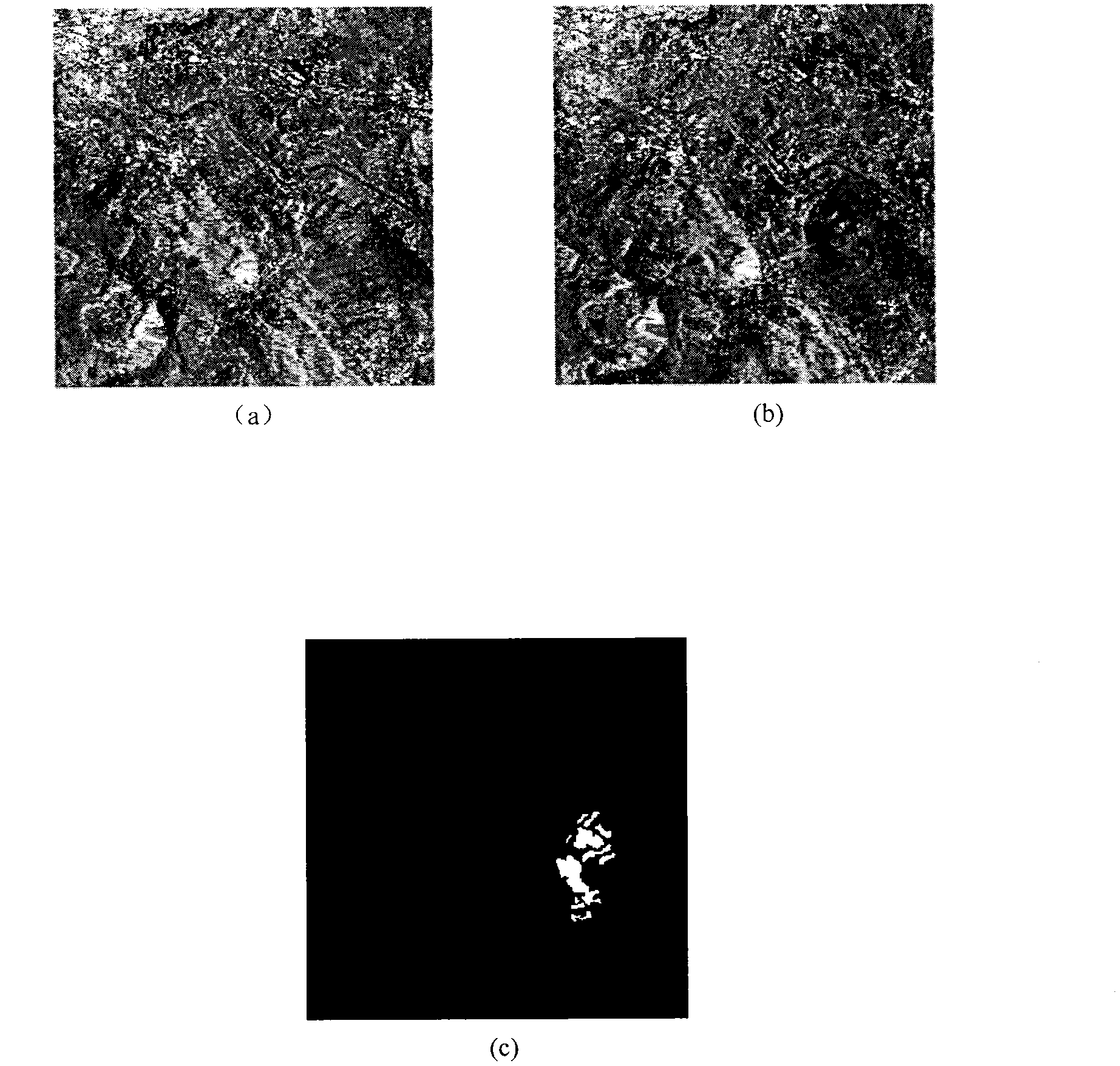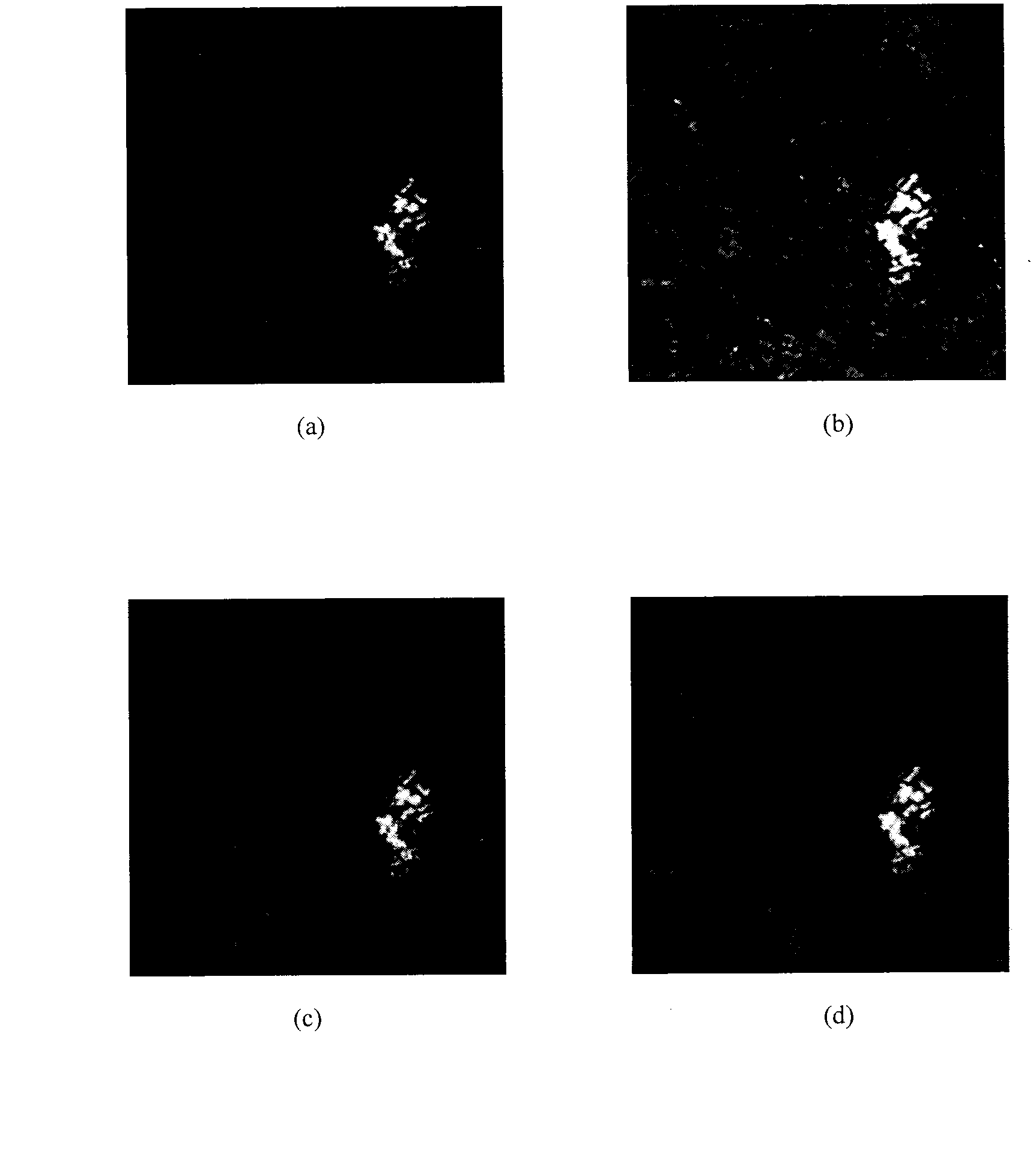Synthetic aperture radar (SAR) image change detection difference chart generation method based on contourlet transform
A technology of image change detection and contourlet transform, applied in image enhancement, image analysis, image data processing and other directions, can solve the problems of high false detection rate, high missed detection rate, large total number of detection errors, etc., to improve detection accuracy , Analyze the effect of processing accuracy improvement
- Summary
- Abstract
- Description
- Claims
- Application Information
AI Technical Summary
Problems solved by technology
Method used
Image
Examples
Embodiment 1
[0038] The present invention is a SAR image change detection difference map generation method based on Contourlet transform, see figure 1 Firstly, the logarithmic ratio image and the mean ratio image are constructed for two preprocessed SAR images of the same region at different times, and then processed by Contourlet transform to generate the corresponding Contourlet coefficients, and then the two images are processed according to the fusion rules designed. The coefficients are divided into high-frequency and low-frequency calculations, and finally the inverse Contourlet transform is performed on the fused Contourlet coefficients to generate a difference map. The specific implementation steps for generating a difference map based on fused SAR image change detection include:
[0039] Step 1 Input two preprocessed SAR images X that have been filtered, denoised, radiometrically corrected and geometrically registered in the same area at different times A , X B .
[0040] Step 2...
Embodiment 2
[0050] The SAR image change detection difference map generation method based on Contourlet transform is the same as embodiment 1, referring to figure 1 , to realize the Contourlet transform of the present invention for SAR image change detection difference map, first input two preprocessed SAR images of the same region at different times, and construct a logarithmic ratio image and a mean ratio image respectively to the two images, and then use the Contourlet The transformation process makes it generate corresponding Contourlet coefficients, and then calculates the Contourlet coefficients of the two images in high and low frequencies according to the designed fusion rules, and finally performs inverse Contourlet transformation on the fused Contourlet coefficients to generate a difference map. The realization process of this invention is described in detail below by this example:
[0051] Step 1: Obtain two synthetic aperture radar (SAR) images at different times in the same ar...
Embodiment 3
[0075] The SAR image change detection difference map generation method based on Contourlet transform is the same as embodiment 1-2, with reference to figure 1 , adopt the present invention to obtain two synthetic aperture radar (SAR) images and reference figure to simulate at different times of the Bern region in this example, and the realization steps are as follows:
[0076] Step 1: Obtain two synthetic aperture radar (SAR) images at different times in the Bern area, filter and denoise the two SAR images, preprocess radiation correction and geometric registration, and the processed two images X A , X B , where the image X obtained after preprocessing A Such as figure 2 As shown in (a), the image X obtained after preprocessingB Such as figure 2 (b) shown.
[0077] Step 2 utilizes the preprocessed such as figure 2 Image X shown in (a) A and figure 2 Image X shown in (b) B , using the logarithmic ratio operation to construct such as image 3 (a) shows the log odds ...
PUM
 Login to View More
Login to View More Abstract
Description
Claims
Application Information
 Login to View More
Login to View More - R&D
- Intellectual Property
- Life Sciences
- Materials
- Tech Scout
- Unparalleled Data Quality
- Higher Quality Content
- 60% Fewer Hallucinations
Browse by: Latest US Patents, China's latest patents, Technical Efficacy Thesaurus, Application Domain, Technology Topic, Popular Technical Reports.
© 2025 PatSnap. All rights reserved.Legal|Privacy policy|Modern Slavery Act Transparency Statement|Sitemap|About US| Contact US: help@patsnap.com



